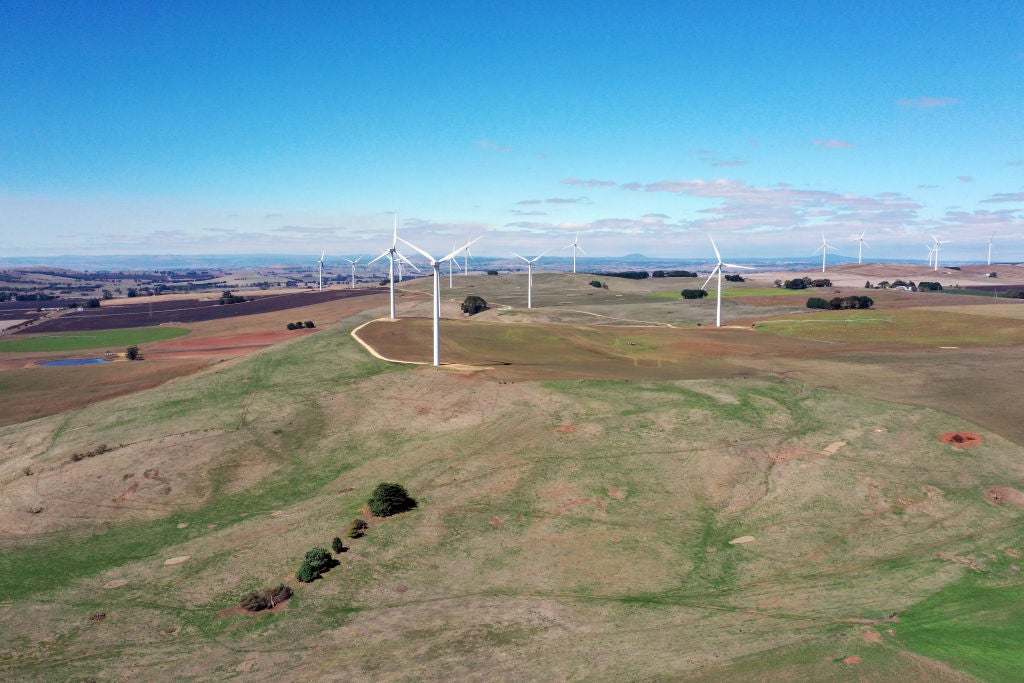
Australia needs to speed up investments in renewables, storage and the electricity network, warns the CEO of the Australian Energy Market Operator (AEMO). Almost two-thirds of coal generation could exit the Australian energy market by 2030, according to modelling by the AEMO. In a speech at Australian Energy Week, CEO Daniel Westerman warned that investments in the energy transition are not happening fast enough to fill that gap.
“Our old coal-fired power stations are closing down… and we must ensure a secure, reliable power system in the periods that follow,” said Westerman.
While coal generation is responsible for just over a third of the power generation capacity in Australia, it supplies around two-thirds of the country’s electricity needs.
Australia’s renewable project pipeline is looking strong. According to data from GlobalData, Energy Monitor’s parent company, the country currently has more than 200GW of proposed renewable projects. More than half of those are wind projects and around a third are solar. Additionally, 40GW of battery storage is planned, according to the AEMO.
“But the crucial word here is ‘proposed’,” explains Westerman. “Bringing these new projects to market and connecting them into the grid urgently is critical to ensure consumers continue to have reliable power when they need it.”
The combination of the approaching coal exit and lagging investments is leaving the grid vulnerable. Data from the Clean Energy Council, Australia’s renewable energy association, shows there have been no new financial commitments to large-scale renewable projects in the first quarter of 2023. The only project to reach a financial close in the quarter was the Rangebank battery energy storage project, with 200MW of capacity. Due to the financial close slowdown, the Clean Energy Council shares the concerns of the AEMO.
Keep up with Energy Monitor: Subscribe to our weekly newsletter“Australia needs to double the rate of renewable energy deployment to ensure we have enough new supply to drive down power prices, replace existing coal generation and ensure we achieve the target of 82 per cent renewable energy by 2030 and put Australia on a path to achieve net-zero by 2050,” said Clean Energy Council chief executive Kane Thornton in a press release. “A slowdown in the rate of new projects reaching financial close is at odds with our need to accelerate deployment.”
The AEMO also highlights the need for investments in technologies such as storage and investments in the grid to be able to handle peaks and dips in energy generation. Rooftop solar is booming in Australia, now being the second-biggest source of generation in the east-coast grid, according to the operator. It estimates that two-thirds of homes in the country will have rooftop solar by 2050. However, large amounts of rooftop solar can be challenging for the grid.
“On mild sunny days, the energy from our rooftops floods the grid, overwhelming most other forms of generation,” clarified Westerman, countering a report that the AEMO released two years ago, which predicted that the grid could cope with strong solar PV growth. “Electricity supply and demand must be balanced at every point in time. An oversupply of generation, even from rooftop solar, would cause our electricity system to lose balance, with dire consequences.”
Read more from this author: Isabeau van HalmAdditionally, Westerman points to energy efficiency as a key pillar of Australia’s energy transition. The non-profit American Council for an Energy-Efficient Economy (ACEEE) ranked Australia 18th out of 25 of the world’s largest energy users for energy efficiency. The ACEEE ranks countries based on best practices and energy efficiency policies in four categories (national efforts, buildings, industry and transportation), with each category scoring a maximum of 25 points. Australia lagged most on its efficiency efforts for industry and transport, receiving just six and 2.5 out of 25 points for those categories, respectively.
“Countries need energy efficiency now more than ever, especially as climate impacts worsen and gas prices soar,” said Steve Nadel, executive director of the ACEEE, in a press release. “Efficiency can halve energy use and emissions while reducing dependence on foreign oil and pain at the pump.”



